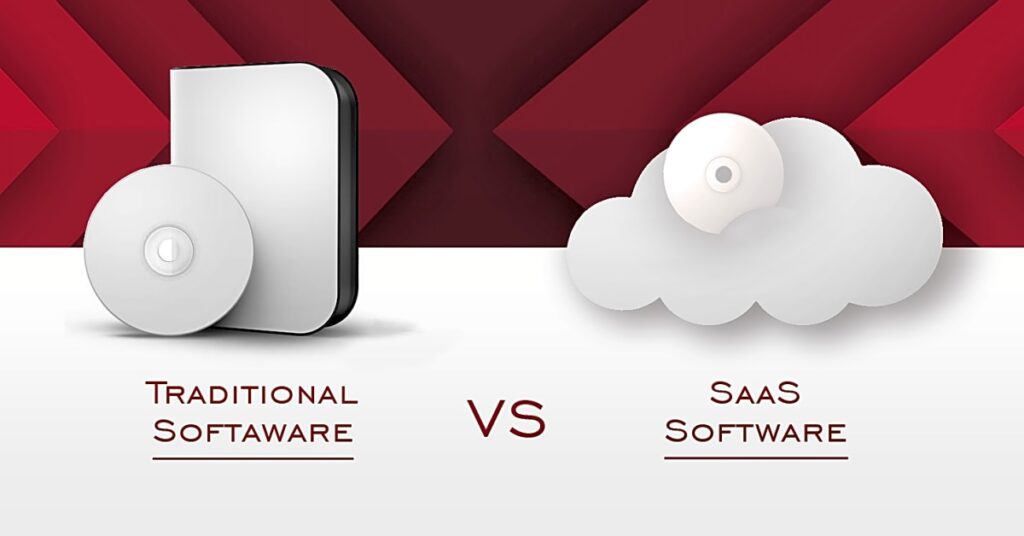aDIudGItaGVhZGluZ1tkYXRhLXRvb2xzZXQtYmxvY2tzLWhlYWRpbmc9IjVmZmQ0MWMyMmUwNDM0NGJiNjgzMDNhZWM4ZWRkMTRlIl0gIHsgdGV4dC1hbGlnbjogY2VudGVyOyB9ICBib2R5Lndvb2NvbW1lcmNlIFtkYXRhLXdvb2NvbW1lcmNlLXZpZXdzLXJlbGF0ZWQtcHJvZHVjdHM9ImVkNjc0N2RhODI3MWM5OTVlM2EyYmE4ZjBlZThlZDc0Il0ud29vdmlld3MtcmVsYXRlZCAgdWwud29vdmlld3MtcmVsYXRlZC1saXN0IC5vbnNhbGUgeyBjb2xvcjogcmdiYSggMjU1LCAyNTUsIDI1NSwgMSApO2JhY2tncm91bmQtY29sb3I6IHJnYmEoIDI1NSwgMTMxLCAxMDMsIDEgKTtwYWRkaW5nOiA4cHggMTJweCA4cHggMTJweDtmb250LXNpemU6IDEycHg7IH0gYm9keS53b29jb21tZXJjZSBbZGF0YS13b29jb21tZXJjZS12aWV3cy1yZWxhdGVkLXByb2R1Y3RzPSJlZDY3NDdkYTgyNzFjOTk1ZTNhMmJhOGYwZWU4ZWQ3NCJdLndvb3ZpZXdzLXJlbGF0ZWQgLmFtb3VudCB7IGNvbG9yOiByZ2JhKCAwLCAwLCAwLCAxICk7IH0gYm9keS53b29jb21tZXJjZSBbZGF0YS13b29jb21tZXJjZS12aWV3cy1yZWxhdGVkLXByb2R1Y3RzPSJlZDY3NDdkYTgyNzFjOTk1ZTNhMmJhOGYwZWU4ZWQ3NCJdLndvb3ZpZXdzLXJlbGF0ZWQgZGVsIHsgY29sb3I6IHJnYmEoIDE5MywgMTkzLCAxOTMsIDEgKTsgfSBib2R5Lndvb2NvbW1lcmNlIFtkYXRhLXdvb2NvbW1lcmNlLXZpZXdzLXJlbGF0ZWQtcHJvZHVjdHM9ImVkNjc0N2RhODI3MWM5OTVlM2EyYmE4ZjBlZThlZDc0Il0ud29vdmlld3MtcmVsYXRlZCBkZWwgLmFtb3VudCB7IGNvbG9yOiByZ2JhKCAxOTMsIDE5MywgMTkzLCAxICk7IH0gYm9keS53b29jb21tZXJjZSBbZGF0YS13b29jb21tZXJjZS12aWV3cy1yZWxhdGVkLXByb2R1Y3RzPSJlZDY3NDdkYTgyNzFjOTk1ZTNhMmJhOGYwZWU4ZWQ3NCJdLndvb3ZpZXdzLXJlbGF0ZWQgaW5zIHsgY29sb3I6IHJnYmEoIDAsIDAsIDAsIDEgKTsgfSBib2R5Lndvb2NvbW1lcmNlIFtkYXRhLXdvb2NvbW1lcmNlLXZpZXdzLXJlbGF0ZWQtcHJvZHVjdHM9ImVkNjc0N2RhODI3MWM5OTVlM2EyYmE4ZjBlZThlZDc0Il0ud29vdmlld3MtcmVsYXRlZCBpbnMgLmFtb3VudCB7IGNvbG9yOiByZ2JhKCAwLCAwLCAwLCAxICk7IH0gYm9keS53b29jb21tZXJjZSBbZGF0YS13b29jb21tZXJjZS12aWV3cy1yZWxhdGVkLXByb2R1Y3RzPSJlZDY3NDdkYTgyNzFjOTk1ZTNhMmJhOGYwZWU4ZWQ3NCJdLndvb3ZpZXdzLXJlbGF0ZWQgLnN0YXItcmF0aW5nIHNwYW46OmJlZm9yZSB7IGNvbG9yOiByZ2JhKCAyMjgsIDIwNCwgNDEsIDEgKTsgfSBib2R5Lndvb2NvbW1lcmNlIFtkYXRhLXdvb2NvbW1lcmNlLXZpZXdzLXJlbGF0ZWQtcHJvZHVjdHM9ImVkNjc0N2RhODI3MWM5OTVlM2EyYmE4ZjBlZThlZDc0Il0ud29vdmlld3MtcmVsYXRlZCAuc3Rhci1yYXRpbmc6OmJlZm9yZSB7IGNvbG9yOiByZ2JhKCAxOTMsIDE5MywgMTkzLCAxICk7IH0gYm9keS53b29jb21tZXJjZSBbZGF0YS13b29jb21tZXJjZS12aWV3cy1yZWxhdGVkLXByb2R1Y3RzPSJlZDY3NDdkYTgyNzFjOTk1ZTNhMmJhOGYwZWU4ZWQ3NCJdLndvb3ZpZXdzLXJlbGF0ZWQgbGkgLmJ1dHRvbiB7IGNvbG9yOiByZ2JhKCAyNDEsIDI0MSwgMjQxLCAxICk7YmFja2dyb3VuZC1jb2xvcjogcmdiYSggNjgsIDY4LCA2OCwgMSApO3BhZGRpbmc6IDE1cHggMjBweCAxNXB4IDIwcHg7Zm9udC1zaXplOiAxNXB4OyB9IC50Yi1pbWFnZXtwb3NpdGlvbjpyZWxhdGl2ZTt0cmFuc2l0aW9uOnRyYW5zZm9ybSAwLjI1cyBlYXNlfS53cC1ibG9jay1pbWFnZSAudGItaW1hZ2UuYWxpZ25jZW50ZXJ7bWFyZ2luLWxlZnQ6YXV0bzttYXJnaW4tcmlnaHQ6YXV0b30udGItaW1hZ2UgaW1ne21heC13aWR0aDoxMDAlO2hlaWdodDphdXRvO3dpZHRoOmF1dG87dHJhbnNpdGlvbjp0cmFuc2Zvcm0gMC4yNXMgZWFzZX0udGItaW1hZ2UgLnRiLWltYWdlLWNhcHRpb24tZml0LXRvLWltYWdle2Rpc3BsYXk6dGFibGV9LnRiLWltYWdlIC50Yi1pbWFnZS1jYXB0aW9uLWZpdC10by1pbWFnZSAudGItaW1hZ2UtY2FwdGlvbntkaXNwbGF5OnRhYmxlLWNhcHRpb247Y2FwdGlvbi1zaWRlOmJvdHRvbX0gLndwLWJsb2NrLWltYWdlLnRiLWltYWdlW2RhdGEtdG9vbHNldC1ibG9ja3MtaW1hZ2U9IjQ2NTM5YmUyM2ZiNjIyNGZkNGY3NDUzYzI2MTAyMGUwIl0geyBtYXgtd2lkdGg6IDEwMCU7IH0gaDEudGItaGVhZGluZ1tkYXRhLXRvb2xzZXQtYmxvY2tzLWhlYWRpbmc9IjRkM2ViODgxYzM4ZDU2OWFiMjUzN2VhZjQ0NGUxZDY2Il0gIHsgdGV4dC1zaGFkb3c6IDNweCAzcHggM3B4IHJnYmEoIDAsIDAsIDAsIDAuNSApO3RleHQtdHJhbnNmb3JtOiBjYXBpdGFsaXplO3RleHQtYWxpZ246IGNlbnRlcjtiYWNrZ3JvdW5kLWNvbG9yOiByZ2JhKCAyNDYsIDI0NywgMjUxLCAxICk7Ym9yZGVyLXJhZGl1czogMjVweDtib3JkZXI6IDNweCBkYXNoZWQgcmdiYSggNTQsIDcxLCAyMDcsIDEgKTsgfSAgQG1lZGlhIG9ubHkgc2NyZWVuIGFuZCAobWF4LXdpZHRoOiA3ODFweCkgeyAgLnRiLWltYWdle3Bvc2l0aW9uOnJlbGF0aXZlO3RyYW5zaXRpb246dHJhbnNmb3JtIDAuMjVzIGVhc2V9LndwLWJsb2NrLWltYWdlIC50Yi1pbWFnZS5hbGlnbmNlbnRlcnttYXJnaW4tbGVmdDphdXRvO21hcmdpbi1yaWdodDphdXRvfS50Yi1pbWFnZSBpbWd7bWF4LXdpZHRoOjEwMCU7aGVpZ2h0OmF1dG87d2lkdGg6YXV0bzt0cmFuc2l0aW9uOnRyYW5zZm9ybSAwLjI1cyBlYXNlfS50Yi1pbWFnZSAudGItaW1hZ2UtY2FwdGlvbi1maXQtdG8taW1hZ2V7ZGlzcGxheTp0YWJsZX0udGItaW1hZ2UgLnRiLWltYWdlLWNhcHRpb24tZml0LXRvLWltYWdlIC50Yi1pbWFnZS1jYXB0aW9ue2Rpc3BsYXk6dGFibGUtY2FwdGlvbjtjYXB0aW9uLXNpZGU6Ym90dG9tfSAgfSBAbWVkaWEgb25seSBzY3JlZW4gYW5kIChtYXgtd2lkdGg6IDU5OXB4KSB7ICAudGItaW1hZ2V7cG9zaXRpb246cmVsYXRpdmU7dHJhbnNpdGlvbjp0cmFuc2Zvcm0gMC4yNXMgZWFzZX0ud3AtYmxvY2staW1hZ2UgLnRiLWltYWdlLmFsaWduY2VudGVye21hcmdpbi1sZWZ0OmF1dG87bWFyZ2luLXJpZ2h0OmF1dG99LnRiLWltYWdlIGltZ3ttYXgtd2lkdGg6MTAwJTtoZWlnaHQ6YXV0bzt3aWR0aDphdXRvO3RyYW5zaXRpb246dHJhbnNmb3JtIDAuMjVzIGVhc2V9LnRiLWltYWdlIC50Yi1pbWFnZS1jYXB0aW9uLWZpdC10by1pbWFnZXtkaXNwbGF5OnRhYmxlfS50Yi1pbWFnZSAudGItaW1hZ2UtY2FwdGlvbi1maXQtdG8taW1hZ2UgLnRiLWltYWdlLWNhcHRpb257ZGlzcGxheTp0YWJsZS1jYXB0aW9uO2NhcHRpb24tc2lkZTpib3R0b219ICB9IA==
LnRiLWltYWdle3Bvc2l0aW9uOnJlbGF0aXZlO3RyYW5zaXRpb246dHJhbnNmb3JtIDAuMjVzIGVhc2V9LndwLWJsb2NrLWltYWdlIC50Yi1pbWFnZS5hbGlnbmNlbnRlcnttYXJnaW4tbGVmdDphdXRvO21hcmdpbi1yaWdodDphdXRvfS50Yi1pbWFnZSBpbWd7bWF4LXdpZHRoOjEwMCU7aGVpZ2h0OmF1dG87d2lkdGg6YXV0bzt0cmFuc2l0aW9uOnRyYW5zZm9ybSAwLjI1cyBlYXNlfS50Yi1pbWFnZSAudGItaW1hZ2UtY2FwdGlvbi1maXQtdG8taW1hZ2V7ZGlzcGxheTp0YWJsZX0udGItaW1hZ2UgLnRiLWltYWdlLWNhcHRpb24tZml0LXRvLWltYWdlIC50Yi1pbWFnZS1jYXB0aW9ue2Rpc3BsYXk6dGFibGUtY2FwdGlvbjtjYXB0aW9uLXNpZGU6Ym90dG9tfSAud3AtYmxvY2staW1hZ2UudGItaW1hZ2VbZGF0YS10b29sc2V0LWJsb2Nrcy1pbWFnZT0iNDY1MzliZTIzZmI2MjI0ZmQ0Zjc0NTNjMjYxMDIwZTAiXSB7IG1heC13aWR0aDogMTAwJTsgfSBoMS50Yi1oZWFkaW5nW2RhdGEtdG9vbHNldC1ibG9ja3MtaGVhZGluZz0iNGQzZWI4ODFjMzhkNTY5YWIyNTM3ZWFmNDQ0ZTFkNjYiXSAgeyB0ZXh0LXNoYWRvdzogM3B4IDNweCAzcHggcmdiYSggMCwgMCwgMCwgMC41ICk7dGV4dC10cmFuc2Zvcm06IGNhcGl0YWxpemU7dGV4dC1hbGlnbjogY2VudGVyO2JhY2tncm91bmQtY29sb3I6IHJnYmEoIDI0NiwgMjQ3LCAyNTEsIDEgKTtib3JkZXItcmFkaXVzOiAyNXB4O2JvcmRlcjogM3B4IGRhc2hlZCByZ2JhKCA1NCwgNzEsIDIwNywgMSApOyB9ICBAbWVkaWEgb25seSBzY3JlZW4gYW5kIChtYXgtd2lkdGg6IDc4MXB4KSB7IC50Yi1pbWFnZXtwb3NpdGlvbjpyZWxhdGl2ZTt0cmFuc2l0aW9uOnRyYW5zZm9ybSAwLjI1cyBlYXNlfS53cC1ibG9jay1pbWFnZSAudGItaW1hZ2UuYWxpZ25jZW50ZXJ7bWFyZ2luLWxlZnQ6YXV0bzttYXJnaW4tcmlnaHQ6YXV0b30udGItaW1hZ2UgaW1ne21heC13aWR0aDoxMDAlO2hlaWdodDphdXRvO3dpZHRoOmF1dG87dHJhbnNpdGlvbjp0cmFuc2Zvcm0gMC4yNXMgZWFzZX0udGItaW1hZ2UgLnRiLWltYWdlLWNhcHRpb24tZml0LXRvLWltYWdle2Rpc3BsYXk6dGFibGV9LnRiLWltYWdlIC50Yi1pbWFnZS1jYXB0aW9uLWZpdC10by1pbWFnZSAudGItaW1hZ2UtY2FwdGlvbntkaXNwbGF5OnRhYmxlLWNhcHRpb247Y2FwdGlvbi1zaWRlOmJvdHRvbX0gIH0gQG1lZGlhIG9ubHkgc2NyZWVuIGFuZCAobWF4LXdpZHRoOiA1OTlweCkgeyAudGItaW1hZ2V7cG9zaXRpb246cmVsYXRpdmU7dHJhbnNpdGlvbjp0cmFuc2Zvcm0gMC4yNXMgZWFzZX0ud3AtYmxvY2staW1hZ2UgLnRiLWltYWdlLmFsaWduY2VudGVye21hcmdpbi1sZWZ0OmF1dG87bWFyZ2luLXJpZ2h0OmF1dG99LnRiLWltYWdlIGltZ3ttYXgtd2lkdGg6MTAwJTtoZWlnaHQ6YXV0bzt3aWR0aDphdXRvO3RyYW5zaXRpb246dHJhbnNmb3JtIDAuMjVzIGVhc2V9LnRiLWltYWdlIC50Yi1pbWFnZS1jYXB0aW9uLWZpdC10by1pbWFnZXtkaXNwbGF5OnRhYmxlfS50Yi1pbWFnZSAudGItaW1hZ2UtY2FwdGlvbi1maXQtdG8taW1hZ2UgLnRiLWltYWdlLWNhcHRpb257ZGlzcGxheTp0YWJsZS1jYXB0aW9uO2NhcHRpb24tc2lkZTpib3R0b219ICB9IA==
Software as a Service (SaaS) is different from the traditional model because the software (application) is already there . IBM Cloud has leveraged the benefits of software-as-a-service (SaaS) and built a portfolio of over 100 SaaS applications that meet key business needs of our customers.. Explore IBM SaaS applications for enterprise and IT. SaaS offers companies multiple benefits in terms of flexibility and savings.
When SaaS providers manage tedious tasks such as installing, managing, and updating software, employees can focus on other priorities. Read on to find out exactly what SaaS is, what benefits it can bring to an organization, what challenges it can bring, common use cases and new technologies. Many people say, “Time is money, and luckily SaaS can save both.. For many SaaS applications, installation is as easy as connecting to the Internet and purchasing a login.
In addition, maintenance responsibilities are shifted from your IT department to the provider itself.. This eliminates the additional hours of work and downtime that could have been required to upgrade traditional software.. Finally, SaaS apps tend to have a smaller learning curve, which means faster adoption across your entire workforce. With the traditional software installation method, updates can take a huge amount of time and money.
Worse yet, version differences between members of your workforce can lead to compatibility issues and a waste of time.. However, SaaS allows subscribers to simply sign up to services that have already been upgraded. Software as a service has a lot to offer. When used correctly, it can help your business save money, time, and manpower.
By eliminating problems such as software maintenance and incompatibility, SaaS can provide optimized focus and increased productivity. However, like other technology solutions, SaaS has some drawbacks. It is important to review options thoroughly on an individual basis before implementing solutions.. To help support the confusing terrain of SaaS, we’ll soon explain some pros and cons to help you make balanced and informed decisions..
There definitely seem to be huge benefits for small businesses.. Paying for what you use can open up really great options for you.. Google’s SaaS programs can be fantastic and extremely cost-effective for SMBs. With Gmail for Business and a powerful cloud backup system, very small businesses can really reduce their costs..
Products and resources to support K12 students and educators. With Office 365, you can access an online version of Microsoft Office Suite. From accessing work email to using SharePoint, it’s really helpful to have your Office tools available from any device. Software as a service enables a steady revenue stream with much more opportunities for business planning.
In addition, SaaS transforms the role of resellers from an external supplier to an internal partner and consultant, making them more difficult to replace. Also offers software-as-a-service solution in its cloud marketplace. Resellers use the Cloud Control Panel to develop, drive, and manage the entire sales process, from very simple drag-and-drop quoting to cloud service adoption, performance reporting and billing. SaaS applications run in the cloud and are essentially leased software that is hosted and managed by the creator..
SaaS can be particularly beneficial for small businesses because it provides access to expensive, powerful software that otherwise might not have been available through traditional purchasing methods. SaaS solutions are typically located in cloud environments that are scalable and integrated with other SaaS offerings.. Technostacks is a leading SaaS development company, and you can connect with us for any type of SaaS-based cloud software development services. In line with other cloud services, SaaS offers small businesses the opportunity to disrupt existing markets while leveraging fair SaaS pricing models.
SaaS apps are essentially internet-delivered software applications that can be accessed from anywhere with almost any device. However, service providers typically don’t allow app code or core features to be customized, making on-premise software a better option for organizations that want complete control over their data and software.. Gone are the days when you could only use software if you were on a specific corporate computer with the software you downloaded on it.. You can compare this to long-established software vendors who generate the majority of their profits from preliminary software license sales and have a comparatively low ongoing support fee.
Organizations can integrate SaaS applications with other software using various application programming interfaces (APIs). SaaS benefits from traditional enterprise software installation models in many ways, including cost-effectiveness, quick configuration and deployment, easy updates, improved accessibility, and scalability. Software as a Service (SaaS) is a precise cloud computing service that provides users with access to a vendor’s cloud-based software. Another benefit is that you can scale your customer base quickly, as SaaS enables small and medium-sized businesses to use software that they would otherwise not use due to the high licensing costs..
The
development of SaaS applications differs from the traditional approach to software development in many ways.
. .
References:



